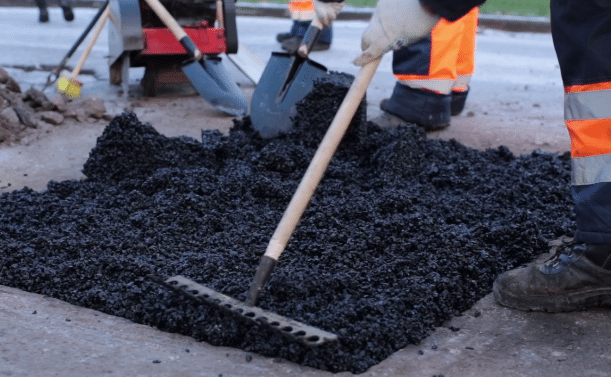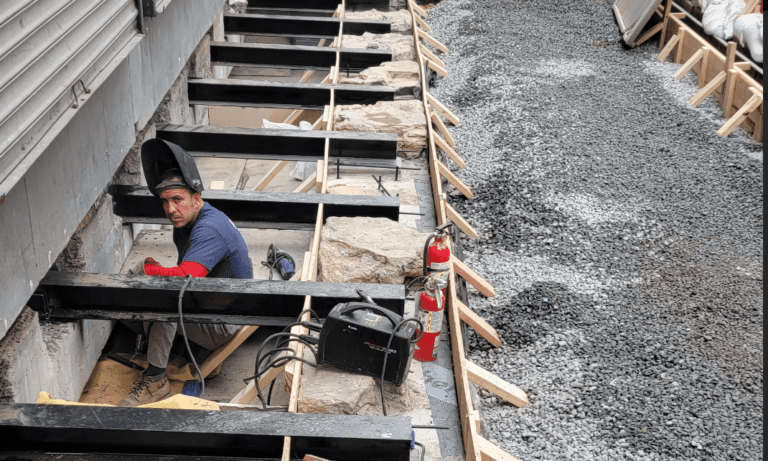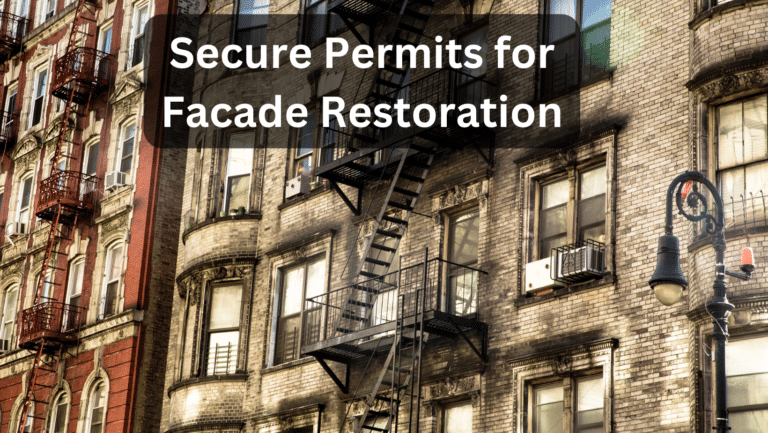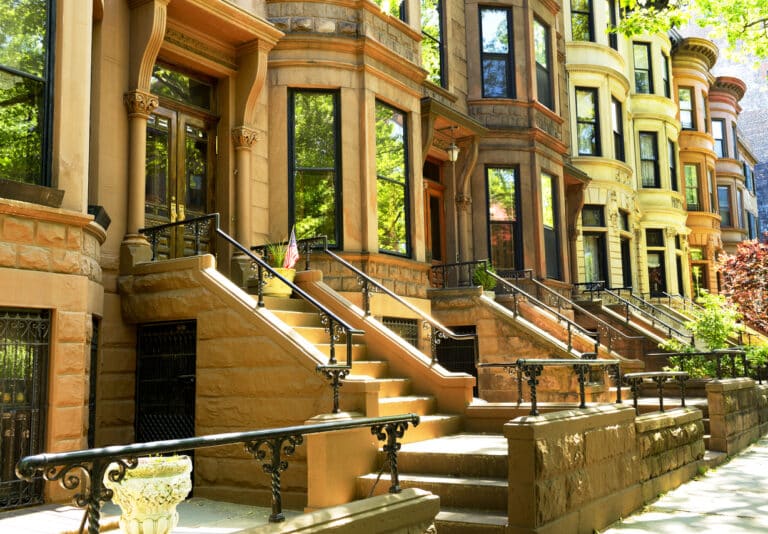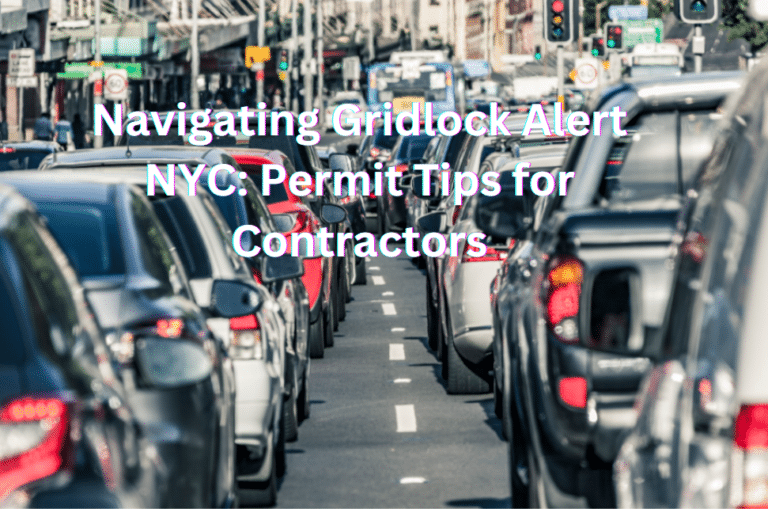Last Updated on March 1, 2025 by Jeffrey Calderon
An In-Depth Look At NYC DOT Permits
Need to build beyond your property line in New York City?
You’ll need a permit from the NYC DOT Central Permit office. Depending whether you’re performing sidewalk construction or a street opening, you may require multiple permits or an extensive review process.
This article contains information on different facets of NYC DOT in helping others navigate the application process.
With this information at your fingertips, understanding which NYC DOT permits you need becomes much easier and less intimidating so that construction can move forward with no delays.
Get ready for a deep dive in this article to melt away the stress of understanding everything you need to know about NYC DOT Permits.
We’ve covered sidewalk construction permits, roadway construction permits, permit fees, and nyc dot issues that require troubleshooting.
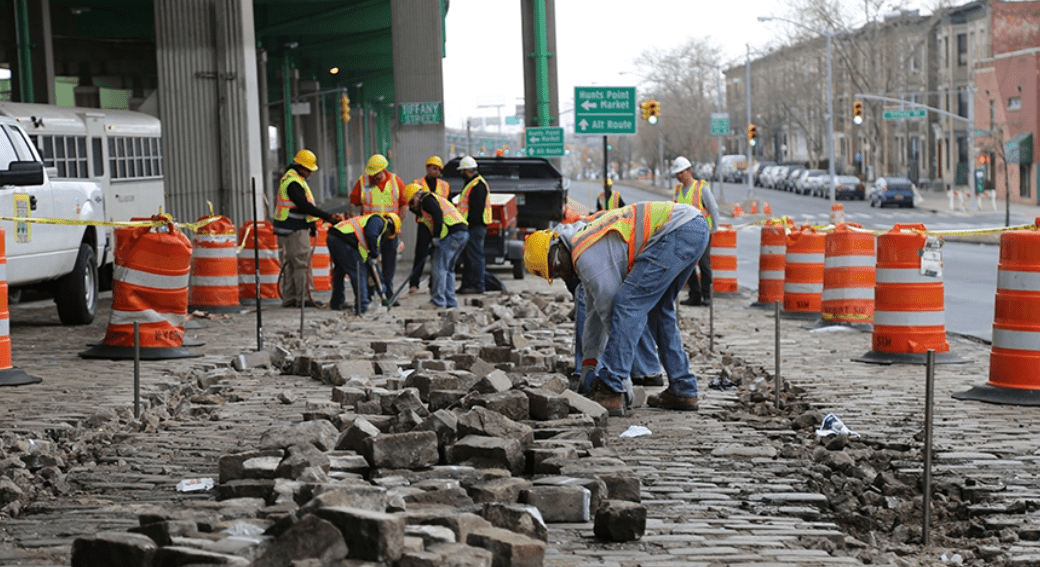
How Do I Obtain NYC DOT Permits?
There are several ways to make permit requests. You may choose to visit the main permit office or you can also visit the individual borough permit offices. You can also fast forward to to our brave new world and apply online, simply visit nycstreets.net to apply under your registered contractor. Whatever you choose, just remember it’s important to adhere to your permit stipulations or else you’ll have an inspector visit your site.
Where Can I Apply For NYC DOT Permits?
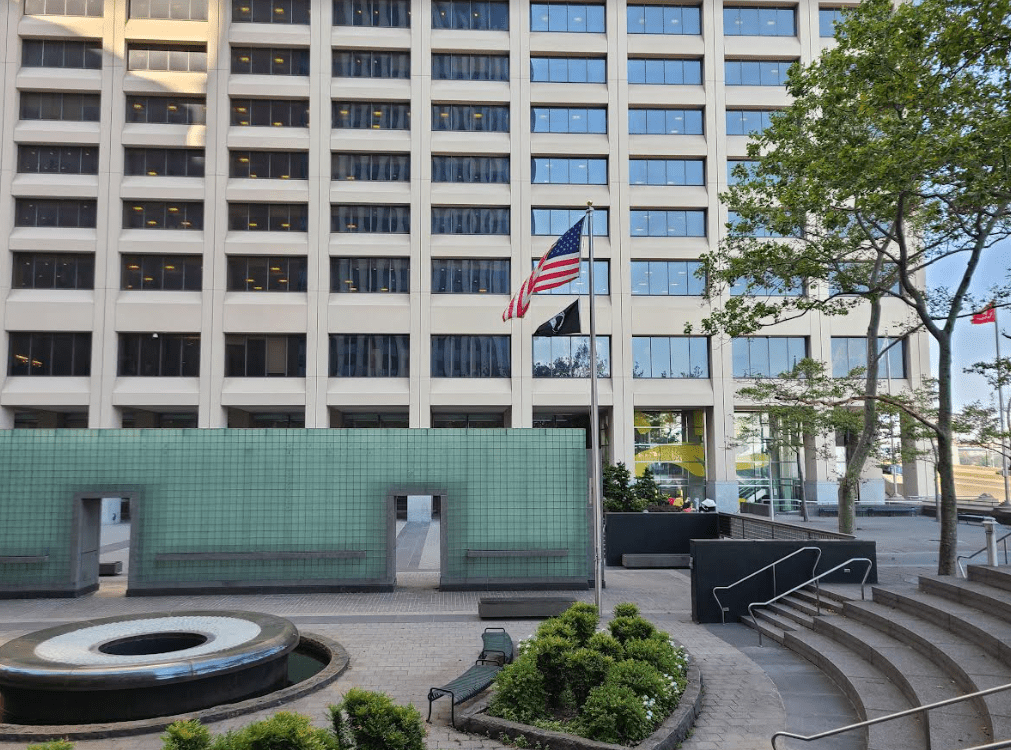
You would first require a relationship with a contractor who wants you to act on their behalf, be a contractor yourself or request a property owners permit. This requires a Permittee Registration Application to be filled out and notarized by the contractor.
The reason is they would have to give you a completed permittee registration application prior to you any permits being submitted online.
Construction permit applications require dimensions listed for all construction work to be done on the sidewalk and/or roadway.
You may visit nycstreets.net for more information if you choose to forego in person applications. NYC DOT issues a specific pin # when first registering under your general contractor.
What NYC DOT Street Permits Would I Need?
Depending on your construction projects and construction related activity, you’ll need a valid permit for each piece of equipment you’ll be utilizing. Not having the correct supporting documentation will cause delays. The NYC Streets permit management system includes most DOT permits that you wish to apply to work on New York City streets. This includes construction related permitting on worksites for but not limited to:
Occupancy of Roadway construction permits
Barriers
Barriers with Fence on Top
Construction Signs
Equipment
Signs
Debris container
Street Opening Permit
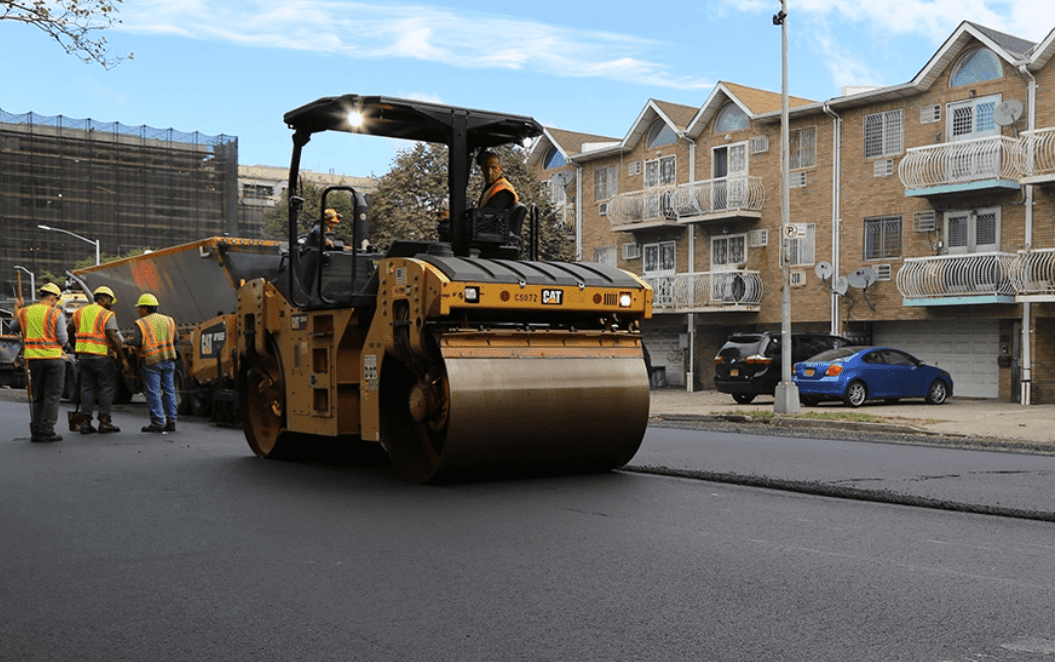
What NYC DOT Sidewalk Permits Would I Need?
Depending on your sidewalk encroachment requirements and scope of work, this can vary quite a bit.
Are you conducting sidewalk repairs?
Are you using a telescopic boom lift to delivery materials over the sidewalk?
Below is a short list of construction related activity NYC DOT Permit Types you may apply for. Remember all permit requests are linked to you.
Sidewalk Repairs
Sidewalk Replacement
Open Sidewalk to Install Foundation Wall
Occupancy of Sidewalk
Crossing Sidewalk
Closing a sidewalk by use of Barriers or Fences
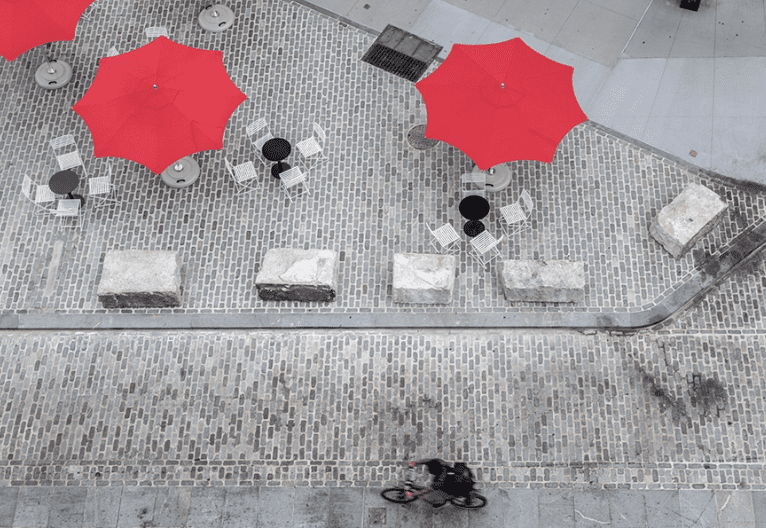
How Much Do NYC DOT Permits Cost?
NYC DOT has varying costs when it comes to their permits. Below is a list of appropriate fees you may encounter:
Street Opening Permit Fees
$135.00
$405.00
Building Operations Permit Fees
$50.00
$80.00
$110.00
$140.00
Sidewalk Construction Permit Fees
$70.00
What is the NYC DOT Street Works Manual?
New York City’s Street Works Manual is a crucial piece of construction documentation for maintaining its bustling streets.
It outlines the responsibilities of those working on New York City’s roadways, from coordinating the closure of certain roads to following protocols for sidewalk and plaza works.
This manual ensures that street repairs are up to code and that New York City’s commuters remain safe as they travel throughout the city.
With this manual in place, New Yorkers can rest assured that their roads are being maintained with the utmost attention to safety and efficiency.
Where is the NYC DOT Permit Office?
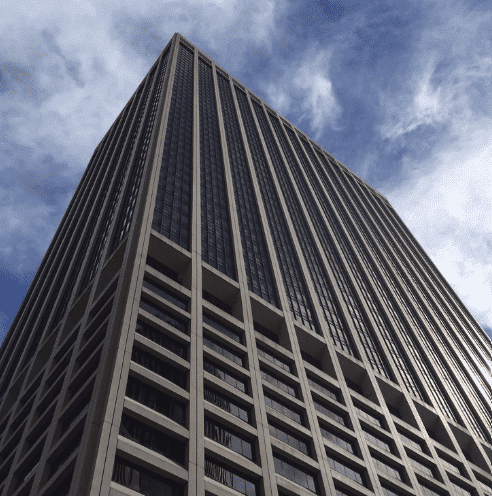
The Central Permit office (CPO) is the main source for permits needed to work on New York City’s streets. It functions as a single point of contact for individuals and business owners applying for new or renewal permits.
The Office of Construction Mitigation and Compliance (OCMC) also plays an important role in managing construction-related activities. OCMC holds regular meetings to review applications, inspect worksites, and ensure current safety standards are being met.
What are OCMC Holds?
When your project goes on hold, it’s normally due to sensitive city street or you may be near a capital improvement project that requires further coordination with a resident engineer.
Other reasons for a hold can be linked to a corrective action request for work performed that is not up to DOT standards or a possible visit from a HIQA Inspector.
Work sites are regularly inspected, even after permits have expired. Permits for street openings need to be maintained as it’s a temporary condition.
How Long Does It Take To Get A NYC DOT Tracking Number?
It normally takes 1-3 business days depending on your insurance broker, insurance carrier and contractor’s business filings paperwork.
After you submit the permittee registration application with supporting paperwork to a NYC DOT insurance liaison, your contractor will be assigned an IBM number that can be used to track progress and receive updates on construction projects.
The NYC Streets Permit Management System sends several notifications that are relevant to your submittals.
If there are any delays or issues, you should discuss details with DOT insurance liaisons for assistance in resolving them.
Once all paperwork has been submitted, your contractor will be assigned a DOT tracking number that they can use to track progress and receive updates on their projects.
What are the Plans and Guidelines for Sidewalks, Curbs, and Roadways?
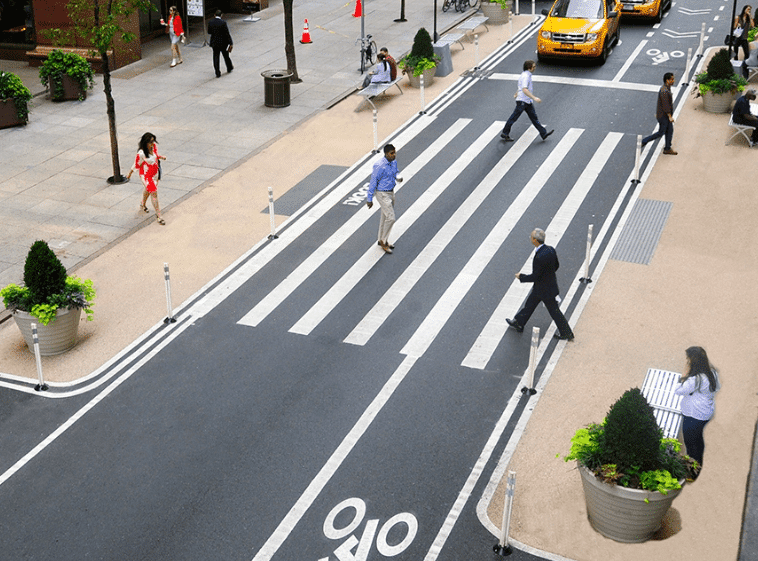
Plans and guidelines for sidewalks, curbs, and roadways outline the design, construction, and maintenance standards for these elements in public spaces.
They typically address issues such as accessibility, safety, and durability, as well as aesthetic considerations such as color, texture, and materials.
The guidelines often include specifications for dimensions, slope, and materials, and may also include provisions for drainage, lighting, and other infrastructure elements.
Additionally, they may provide recommendations for the installation of features such as pedestrian crossings, bike lanes, and street furniture.
The guidelines are usually developed by government agencies or professional organizations, and are intended to ensure consistency, quality, and accessibility in the design and construction of sidewalks, curbs, and roadways.
What Are Commercial Refuse Container Permits?
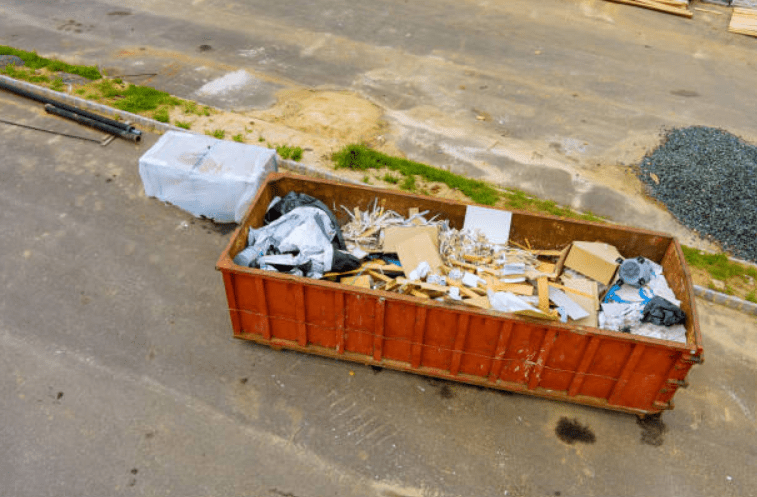
Commercial refuse container permits are issued to contractors for construction debris in relation to construction activity.
These permits allow for the placement of construction containers on city streets, sidewalks, and other public property.
Please be advised they can’t be closed containers, they must be open. These containers can typically hold 20-30 yards of debris.
This permit process is designed to ensure that construction debris container does not impede vehicular traffic or cause safety hazards in any kind.
They must also be on 3/4 inch planks to protect the street surface.
What Are Other Things That I Can Do At The NYC DOT Related To Permits?
You can apply for a permit for operating specific types of vehicles or equipment, as well as permits necessary to clear your violations.
Typically when a violation is concerned, you’ll most likely have to hire a general contractor in order to repair the sidewalk up to DOT standards.
When going to the New York City Department of Transportation (I’ve gone to two offices in Manhattan and Brooklyn) you may speak with a Permit Management supervisor with any questions, concerns or grievances with your dealings with examiners or simply submit in person applications.
What are Project Informational Signs?
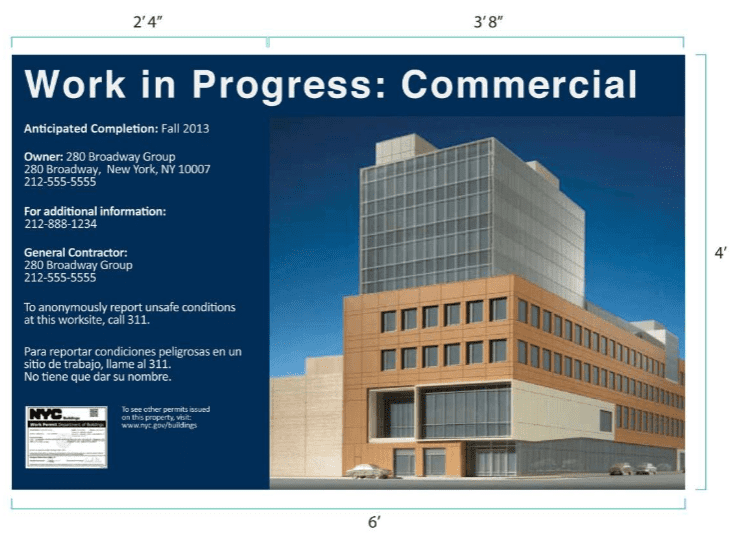
Project Information signs require information relevant to the jobsite. These signs must be displayed on the construction fence This includes but not limited to:
Project Location Address
Project Completion Date
Owner Information
Additional Information
General Contractor Information
Can I Perform A NYC DOT Permits Search?
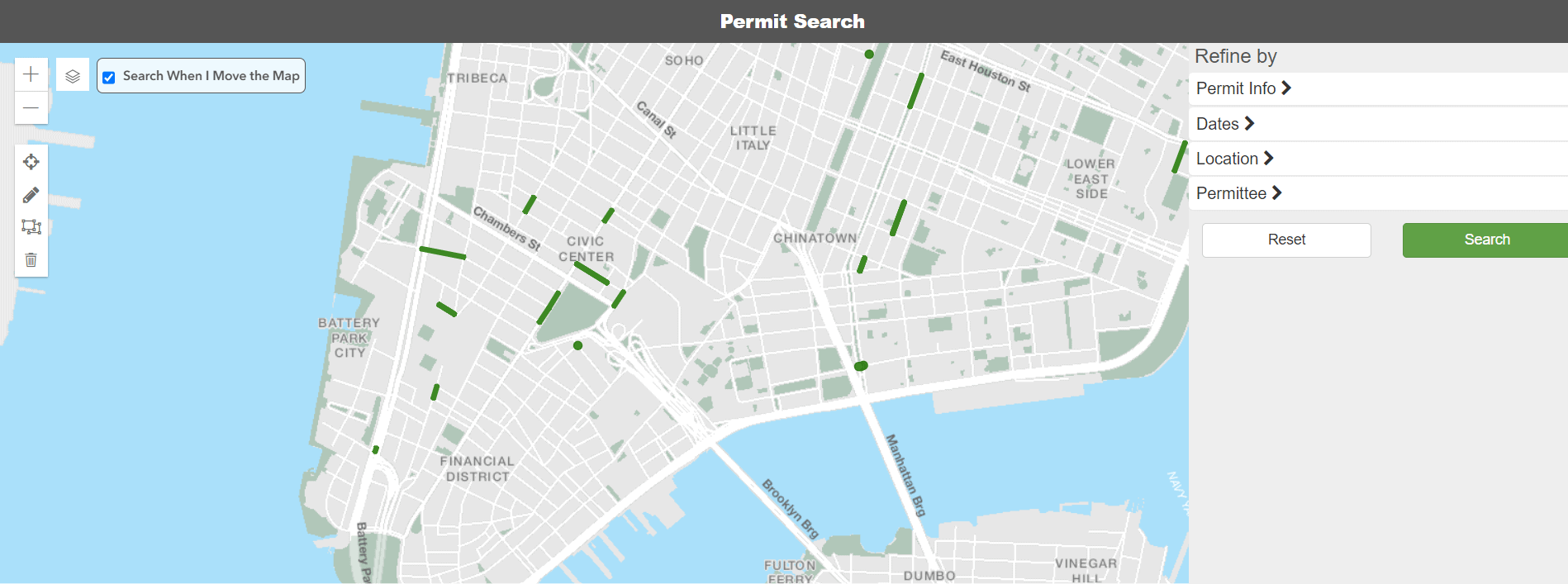
Yes and no. You may use the search feature on nycstreets.net to research any and all block segments in the Five Boroughs of New York City.
While this search feature is fantastic, it’s also limited with the caveat that you’re only allowed to look up active permits.
This means if a permit expired yesterday and you’re reviewing the NYC DOT database this morning, it won’t show up.
Due to this limitation, this search feature is best used for planning for DOT Permit submissions to review who is working on the block segment today.
What are DOT Permit Stipulations?
Prior to permit issuance you’ll receive DOT rules known as “Stipulations”.
These stipulations govern ALL of your construction activity from the moment of permit issuance through permit completion.
See all current stipulations below, bear in mind your DOT examiner will only use a handful of these as they relate to your specific jobsite.
Get ready as this list is about to get REAL!
010–This permit may be extended once only, for a period of 14 at $40. However, it must be presented for extension no later than 5 business prior to expiring.
011–Post signs meeting NYCDOT specifications for directing pedestrians to opposite sidewalk.
012–Flag person must be provided to stop pedestrians and/or vehicular traffic while lifting material overhead.
013–Maintain a minimum of 5 foot clear sidewalk.
014–Maintain a minimum of 5 foot pedestrian walk in roadway. Walkway must meet NYCDOT specifications
015–Maintain a minimum of 8 foot clear sidewalk
016–Full width of sidewalk shall be opened to pedestrians when site is unattended
017–Contractors shall notify Police, Fire, EMS, Community boards, and abutting property owners 48 hours prior to construction.
018–No noisy operations may occur after 10:00 PM.
019–Work 7 AM to 6 PM, Monday to Friday.
020–Restore all travel lanes to traffic after working hours.
021–Maintain one 12 foot lane for local and emergency traffic at all times.
022–Place barricades and post signs meeting NYC MUTCD standards stating “Road Closed to Through Traffic.”
023–Maintain one 11 foot lane for traffic.
024–Maintain two 11 foot lanes for traffic.
025–Maintain three 11 foot lanes for traffic.
026–Maintain four 11 foot lanes for traffic.
027–Maintain 2 lanes for traffic, 1 lane in each direction.
028–Maintain 4 lanes for traffic, 2 lanes in each direction.
029–Coordinate construction activity with theatre prior to work.
030–Occupy a maximum of 12 feet of roadway for asbestos removal.
031–Maintain two 11 foot lanes, one 11 foot lane on each side of the existing double yellow center line.
032–Maintain four 11 foot lanes, two 11 foot lanes on each side of the existing double yellow center line.
033–Maintain two 11 foot lanes, one 11 foot lane on each side of the existing center mall.
034–Maintain four 11 foot lanes, two 11 foot lanes on each side of the existing center mall.
035–Maintain one 11 foot lane for two-way traffic with flaggers at each end of the work zone.
036–No work may extend more than 8 feet from the curb without explicit authorization from OCMC.
037–Section 24-224 Administrative Code Variance granted for hours and stipulated herein.
038–Warning signs and traffic safety devices shall be provided, installed, maintained and removed by the Permittee in accordance with the “New York State Manual of Uniform Traffic Control Devices.”
039–Occupy 8-foot width of roadway adjacent to the curb.
040–Occupy 12 foot width of roadway; full width of roadway restored to traffic when site is unattended.
041–Occupy one 11 foot lane.
042–Occupy two 11 foot lanes.
043–Occupy three 11 foot lanes.
044–Occupy four 11 foot lanes.
045–Occupy 12 foot width of roadway, restore all travel lanes after working hours.
047–Occupy 8 foot width of roadway adjacent to NORTH curb line.
048–Occupy 8 foot width of roadway adjacent to SOUTH curb line.
049–Occupy 8 foot width of roadway adjacent to EAST curb line.
050–Occupy 8 foot width of roadway adjacent to WEST curb line.
051–Occupy 11 foot width of roadway adjacent to NORTH curb line.
052–Occupy 11 foot width of roadway adjacent to SOUTH curb line.
053–Occupy 11 foot width of roadway adjacent to EAST curb line.
054–Occupy 11 foot width of roadway adjacent to WEST curb line.
055–Occupy 20 foot width of roadway adjacent to NORTH curb line.
056–Occupy 20 foot width of roadway adjacent to SOUTH curb line.
057–Occupy 20 foot width of roadway adjacent to EAST curb line.
058–Occupy 20 foot width of roadway adjacent to WEST curb line.
059–All containers must comply with local law 34A.
060–Work may occur 24 hours a day, seven a week.
061–All work operations must be restricted to within 11 feet of the NORTHEAST quadrant of the intersection.
062–All work operations must be restricted to within 11 feet of the NORTHWEST quadrant of the intersection.
063–All work operations must be restricted to within 11 feet of the SOUTHEAST quadrant of the intersection.
064–All work operations must be restricted to within 11 feet of the SOUTHWEST quadrant of the intersection.
065–Work crossing roadway CANNOT extend more than 11 feet at a time. Backfill and plate before proceeding.
066–Do not place materials, trailers, cranes, or equipment in front of hydrants, bus stops or driveways.
067–Work 9PM to 6AM Monday to Friday, maintain two 11 foot lanes for traffic, restore full width when site is unattended.
068–Work 11PM to 5AM Monday to Friday, maintain two 11 foot lanes for traffic, restore full width when site is unattended.
069–Work 12:01AM to 5AM Monday to Friday and/or Sunday 12:01 to 8AM, full closure of roadway, restore full width when site is unattended.
070–Working hours are Eastbound 7AM to 3PM or Westbound 10AM to 4PM, Monday through Friday.
071–Work 10AM to 4PM, Monday to Friday.
072–Work 9AM to 4PM, Monday to Friday.
073–Work Monday to Friday, 10AM to 4PM, and Saturday and Sunday, with no noisy operations after midnight.
074–Work Saturday 8AM to 6PM and Sunday 9AM to 6PM.
075–Work Saturday and Sunday and/or weeknights 7PM to 6AM.
076–Work Saturday and Sunday.
077–No noisy operations after midnight.
078–Full width of roadway shall be opened to traffic when site is unattended.
079–Work 7PM to 10AM weeknights.
080–Work 7PM to 6AM weeknights, no weekends.
081–Work 10AM to 7PM, Monday through Friday.
082–Work 7AM to 4PM, Monday through Friday.
083–Work Sunday only, 12:01AM to 6PM.
084–Work Sunday, 12:01AM to 6AM Monday morning.
085–Work from 7PM Friday through 6AM Monday.
086–Work 7AM to 3PM, Monday through Friday.
087–Work 9AM to 3PM, Monday through Friday.
088–Work 10AM to 3PM, Monday through Friday.
089–Work 9AM to 7PM except Sunday.
090–Embargo
091–This permit activity may not be started until permitee coordinates with the resident engineer.
092–Requires OCMC review.
093–Work hours are northbound 7AM to 3PM or southbound 10AM to 4PM, Monday through Friday.
094–Work hours are northbound 10AM to 4PM or southbound 7AM to 3PM, Monday through Friday.
095Work hours are northbound 7AM to 3PM or southbound 10AM to 6PM, Monday through Friday.
096–Work hours are northbound 10AM to 6PM or southbound 7AM to 3PM, Monday through Friday.
097–Work hours are eastbound 10AM to 4PM or westbound 7AM to 3PM, Monday through Friday.
098–Work hours are eastbound 7AM to 3PM or westbound 10AM to 6PM, Monday through Friday.
100–Work hours are eastbound 10AM to 6PM or westbound 7AM to 3PM, Monday through Friday.
101–The Permitee is required to install, maintain and remove all necessary temporary parking and regulatory signs and pavement markings.
102–Work 10PM to 6AM nightly.
103–Parking of private vehicles on the street (roadway and sidewalk) work areas is prohibited.
104–Local and emergency access must be provided from each end of the block at the intersections with use of flaggers and signage.
105–Designated as cobblestone / distinctive street. Roadway / sidewalk must be restored in kind. Approval from DOT Borough Street Maintenance is required before work commences.
106–Contractors shall notify in writing Police, Fire, EMS, Community Boards, and all property owners on the affected street segment a minimum of 7 calendar days prior to closure. When applicable, NYCT or private bus companies must also be notified.
107–Loading and unloading, standing or parking in a lane adjacent to the work zone in the roadway is prohibited. This applies to permittees and all of their subcontractors.
108–NYC Administrative Code, 19-142, workers on excavations: a person to whom a permit may be issued, to use or open a street, shall be required, before such permit may be issued, to agree that none but competent workers, skilled in the work required of them, shall be employed thereon, (cont. on stip 109)
109–and that the prevailing scale of union wages shall be the prevailing wage for similar titles as established by the fiscal officer pursuant to sec. Two hundred twenty of the labor law, paid to those so employed.
110–A VMS board must be placed a minimum of 7 calendar days prior to closures within a legal parking space entering the street to be closed and the dates and times of such closure. VMS board must be removed upon completion of the approved closure.
111–A 4′ x 4′ fixed orange construction sign with 5″ black lettering must be placed a minimum of 7 calendar days prior to closure at a location entering the street to be closed. The sign must be placed at a height of 7-10 feet and state the street to be closed and the dates and times of such closure. Fixed sign must be removed upon completion of the approved closure.
204–This permit includes authorization for the storage of equipment and materials on the job site only. Off-site storage must be permitted separately
206–Designated landmark area. Pavement must be restored in kind. Approval from the landmarks preservation Commission is required before work commences.
410–Variance granted to work during the construction embargo as stipulated by OCMC office.
How Do I Get A Permit To Close A Street in NYC?
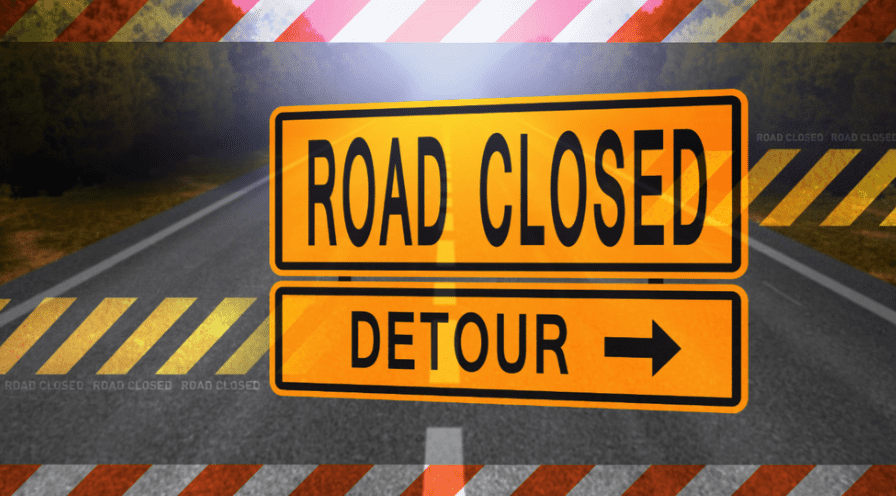
In order to fully close the roadway to vehicular traffic (and sometimes pedestrians as well) you must complete the Full Roadway Closure process.
To be clear, this is for construction related operations only.
This process takes roughly 10 days to complete and requires written notices to be submitted to NYPD, FDNY, Community Board, OCMC and all residents on block segment affected.
This procedure is used in conjunction with street opening permits, sometimes private or executed by utility companies.
Even other city agencies like DDC work in conjunction with NYC DOT to close block segments to perform work that is crucial.
Can I Relocate or Remove a Street Light?

Most definitely, but you must provide significant supporting documentation to DOT.
If your electrical contractor is to perform work on a NYC Street Light, they’ll need to be part of a handful of approved companies that are allowed to do this type of work.
Street opening permits can be required depending on where the electrical feeds are located (other subsurface infrastructure may require additional coordination).
Some street lights even power APS poles that assist blind people when crossing the street.
Frequently Asked Questions
How do I Register With NYC DOT?
You must provide documentation to show you have General Liability, Workman’s Compensation and Permit Bond insurances in place.
Do I Need a NYC DOT Permit if I’m Working Upstate?
No, DOT jurisdiction is only within the Five Boroughs of NYC. Visit your county municipality when working in other areas of NYC.
Do I Need a NYC DOT Permit To Caulk Sidewalk Joints?
There is no permit required to caulk or seal sidewalk joints. However, if you have a Corrective Action Request for not caulking the joints, a permit is required.
How Long Do NYC DOT Permits Last?
DOT Permits can last anywhere from 1 day all the way up to 90. They don’t last more than 90 days.
How Do I Correct A NYC DOT Violation?
Some violations can be cleared by paying a small to big fine, other violations require work to be done. If there was work to be done, prepare for an inspection.
Do I Need To Hire A Professional To Apply for NYC DOT Permits?
If you’re doing something simple as a repair sidewalk, this can be accomplished on your own if you have the time. Any other scopes of work should be reviewed by a filing representative to ensure accuracy and compliance.
Conclusion
Needless to say, NYC DOT has more departments than the military industrial complex.
Your main takeaway should be if you are working more than three feet beyond the property line, definitely apply for DOT permits ahead of time.
If all this seems a little too much for you to handle on your own, feel free to reach out and talk directly to myself, the NYC DOT specialist. Thank you for reading and good luck on your next construction project!

